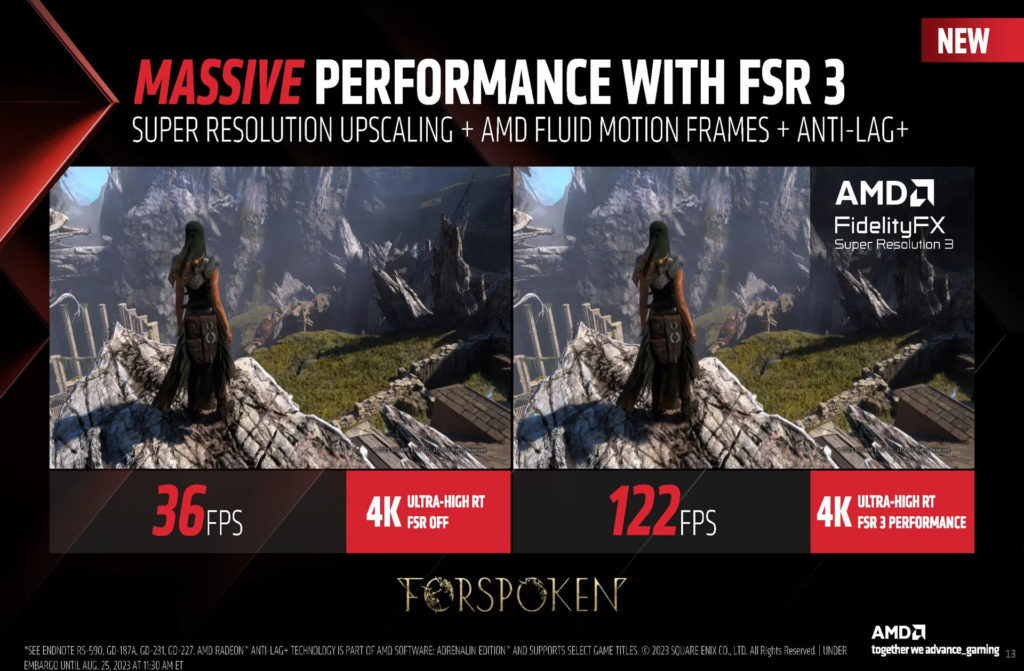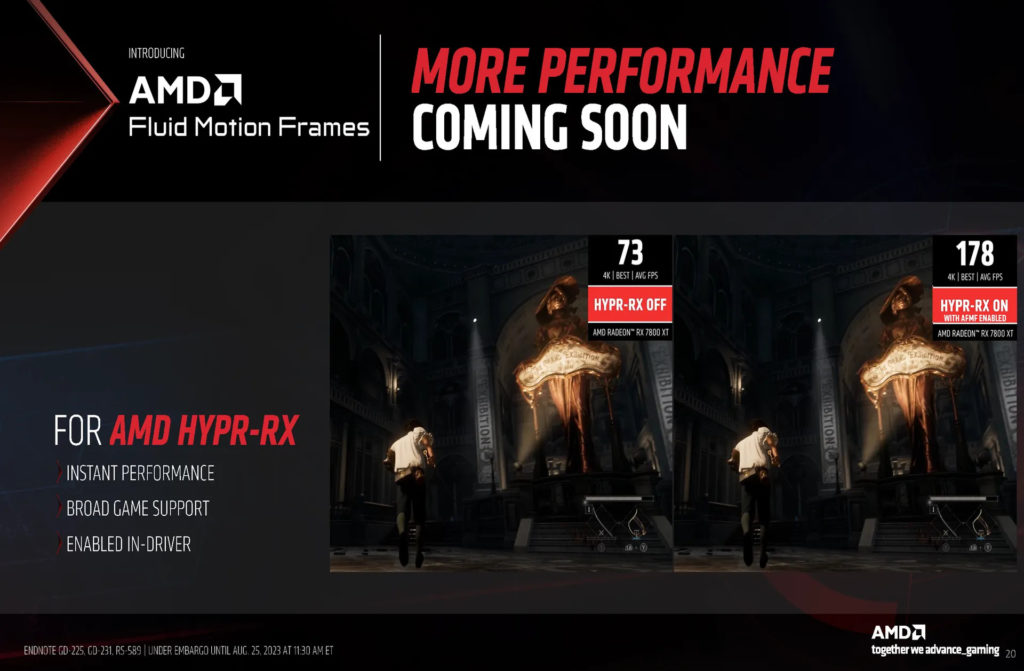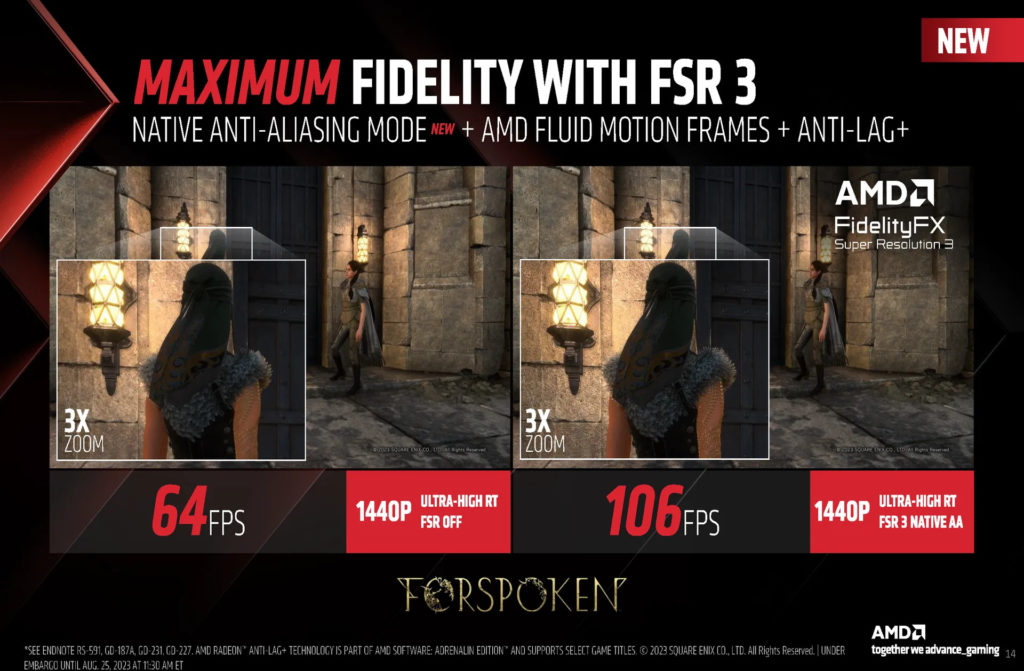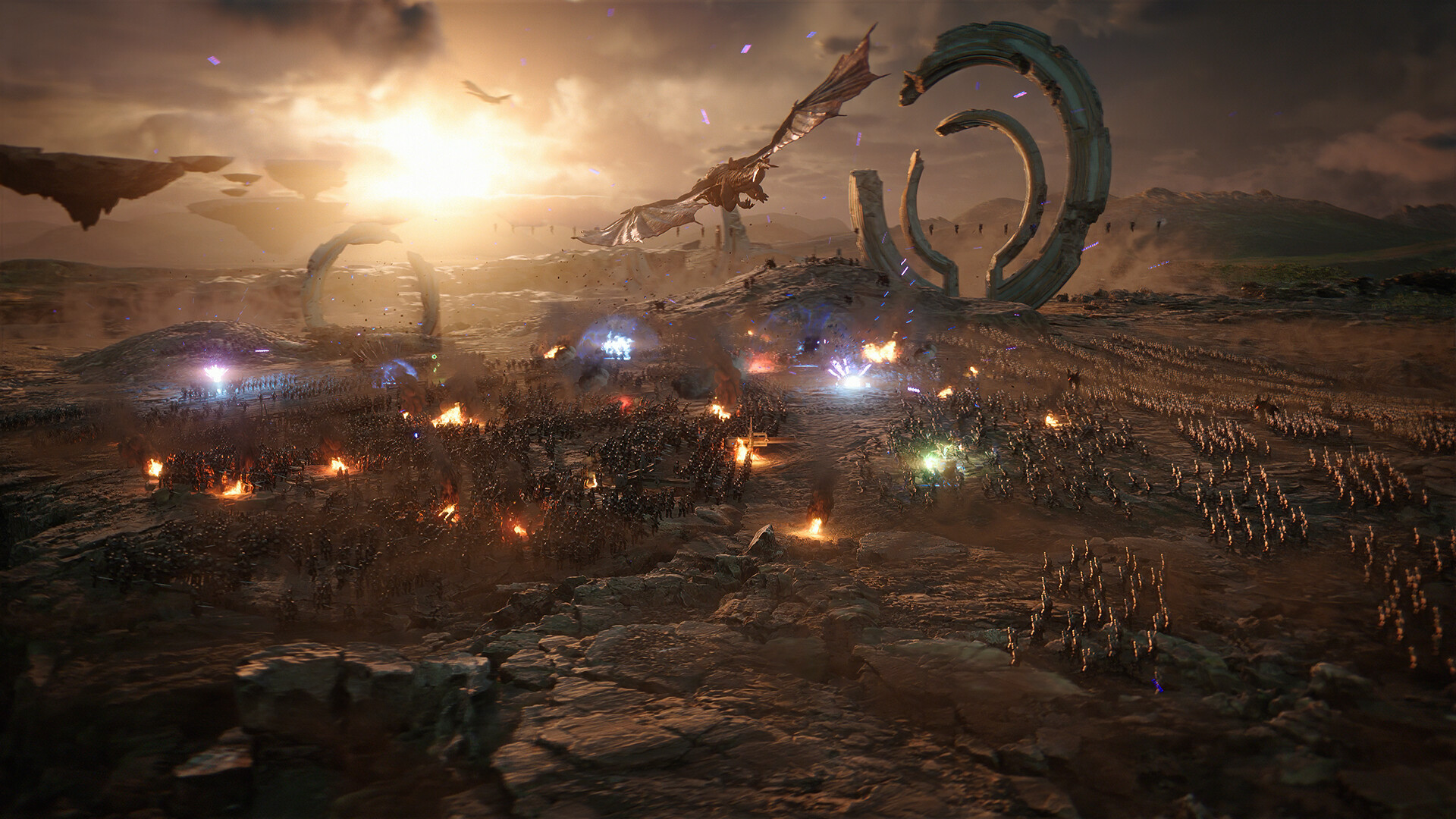At Gamescom, AMD presented not only new video cards, but also FSR 3 technology, which it has been promising since last fall. Unfortunately, this time we did not get the exact release date, but there was quite a lot of key information.
FSR 3 essentially copies the DLSS marking, as it is a package of three functions: upscaling (FSR 2), latency reduction (Anti-Lag +) and finally a new technology in the form of image generation (Fluid Motion Frames). However, unlike Nvidia’s Frame Gen, FSR 3 will work on cards from all three manufacturers as it doesn’t require any special hardware, it’s a pure software solution, and it will also work on consoles. However, this still needs to be implemented in the game. And just like with DLSS 3, the game needs to have a higher base frame rate for perfect results, AMD recommends at least 60fps.

AMD promises that in September we should see support for Aveum’s Forspoken and Immortals games. Other games with announced support: Avatar: Frontiers of Pandora, Cyberpunk 2077, Warhammer 40,000: Space Marine II, Frostpunk 2, The Alters, Squad 2, Starship Roopers: Extermination, Black Myth: Wukong, Crimson Desert and Like a Dragon: Infinite Wealth . .
Some journalists have already managed to see FSR 3 directly in action, not without Digital Foundry, which brought quite extensive impressions. These are indeed positive results, although they note that this was a non-automated demo, so the editors were unable to test how bad it was with the added delay. However, purely in terms of fluidity and image quality, the FSR 3 seems to do well with Nvidia’s tech, and there were no user interface issues either. However, both games (Forpsoken and Immortals of Aveum) had v-sync enabled, and it’s not entirely clear why.
But that’s not all AMD showed, because it also introduced a separate AMD Fluid Motion Frames (AFMF) technology, which also generates images, but does not use additional information, embedding it directly into the game, since it works at the driver level. It can be used in all games using DirectX 11 or 12.

In fact, this is a technology similar to image interpolation on TVs, but with much lower latency. Of course, the image quality isn’t as good as in FSR 3, but thanks to the new feature, AMD is aiming for very high frame rates, for example, if you want to take full advantage of your monitor’s refresh rate. AFMF is due out in the first quarter of next year, but only for RX 7000 series graphics cards as part of the HYPR-RX package.
The latest news is the new FSR upscaling mode, more precisely without upscaling. This is a native mode that renders the game at the selected resolution, but still applies FSR anti-aliasing, which can often be better than TAA or other technologies used in the game. Basically, it’s Nvidia’s alternative to DLAA.

Source : Zing



